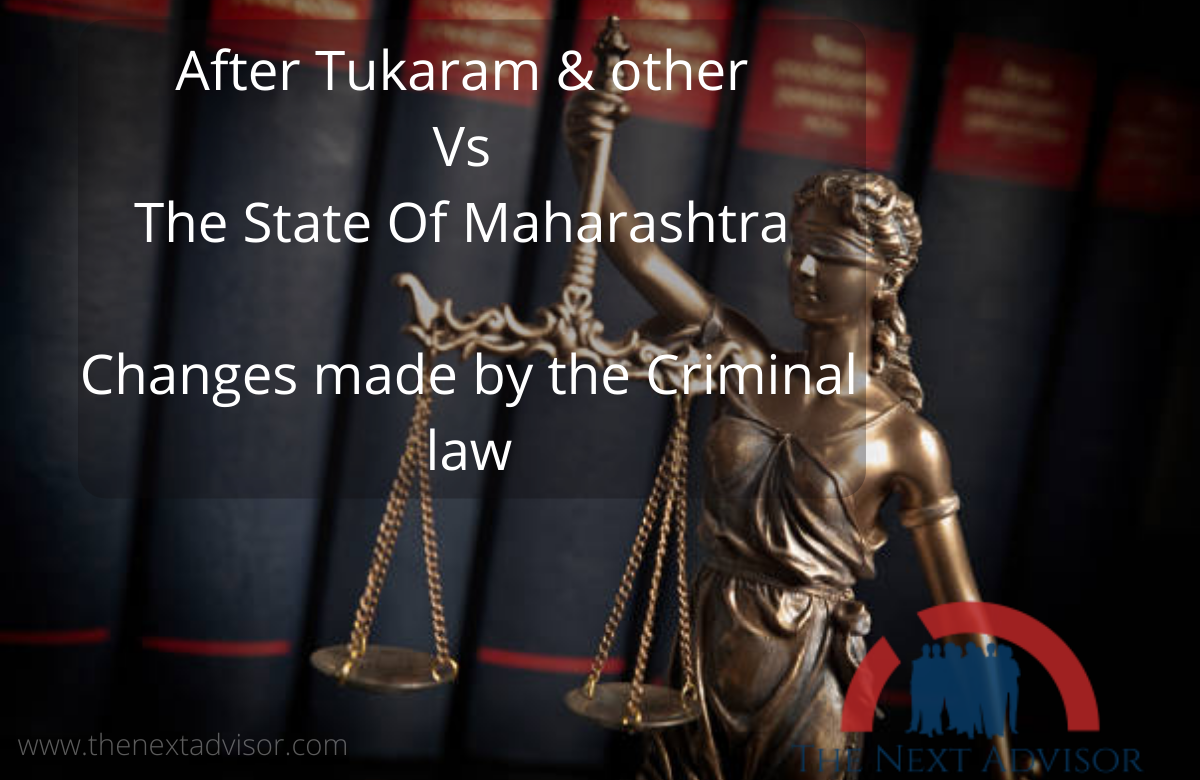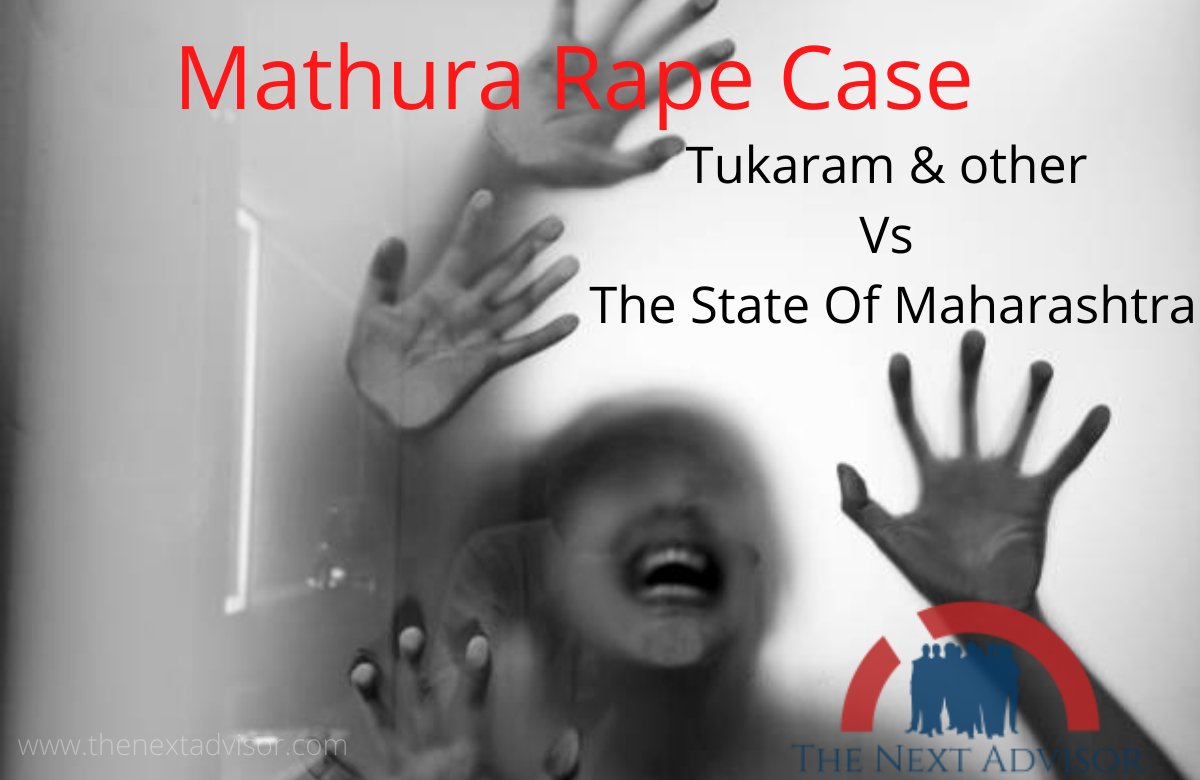The Mathura rape case was an incident of custodial rape in India on 26 March 1972, wherein Mathura, a young tribal girl, was allegedly raped by two policemen on the compound of Desai Ganj Police Station in Chandrapur district of Maharashtra. After the Supreme Court acquitted the accused, there was a public outcry and protection, which eventually led to amendments in Indian rape law via The Criminal Law (Second Amendment) Act 1983 (N0.46).
Facts of the Mathura Rape Case:-
The Mathura rape case was an incident of Custodial Rape. Mathura’s parents died when she was a child and she was living with her brother in Gadchiroli District Maharashtra. Mathura was a young orphan tribal girl living with one of her two brothers. She was a Dalit.
The incident is suspected to have taken place on 26 March 1972, she was between 14 and 16 at that time. Mathura occasionally worked as domestic help with a woman named Nushi. She met Nushi’s nephew named Ashok who wanted to marry her, but her brother did not agree to the union and went to the local police station to lodge a complaint claiming that his sister, a minor, was being kidnapped by Ashok and his family members.
After receiving the complaint the police authority brought Ashok and his family members to the Police Station. Following general investigation Mathura, her brother, Ashok and his family members were permitted to go back home. However, as they were leaving, Mathura was asked to stay behind while her relatives were asked to wait outside. Mathura was then raped by the two policemen.
The events that took place later are horrifying and inhuman. Ganpat took Mathura Backside of the Police Station and raped her. Tukaram enter and fonder with her private part, but he could not lake her because he was highly intoxicated. Meanwhile, Ashok, Gama, and her family member were waiting outside who were suspicious on the Police Station. Because the light was switched off and the door was locked.
They shouted and attracted the crowd. Mathura came out and alleged that she was raped by Ganpat and Tukaram. The police were not ready to file an FIR but under the pressure of the crowd, Police lodged a complaint. When her relatives and assembled crowd threatened to burn down the Police Chowky, the two accused Policemen, Ganpat and Tukaram, reluctantly agreed to file a panchnama (legal recording of evidence).
Mathura was examined by a doctor who found that she had no injury on her body. Her hymen revealed old ruptures. The vagina accepts two fingers easily. The age of the girl was estimated by the doctor, which was between 14 and 16 years. The chemical examiner did not find traces of semen in the pubic hair and vaginal-smear slides. The Presence of semen was, however, detected on the girl’s clothes.
Judgment of the Mathura Rape Case:-
Judgment by District and Session Court
The case came for hearing on 1 June 1974 in the Session Court. Session Court passed a very weird judgment. The judgment returned found the defendants not guilty. It was stated because Session Court held that Mathura was shocking lier because her testimony was false and full of improbabilities. Session court also stated that the Mathura had xxxual intercourse at Police Station but rape had not been proved.
Mathura was ‘habituated to xxxual intercourse’ her rape consent was voluntary; under the circumstances, only xxxual intercourse could be proved and not rape. There was no satisfactory evidence to prove that Mathura was below 16 years of age on the date of occurrence.
The High Court examined the given decision as follows:
On appeal, the Nagpur High Court set aside the judgment of the Session Court and sentenced the accused to one and five years imprisonment respectively. The Court held that passive submission due to fear induced by serious threats could not be construed as consent or willing xxxual intercourse. High Court lost sight of the fact that Mathura and Gama were leaving the Police Station and the case is that at that time Ganpat caught her.
Bombay High Court found that the xxxual intercourse was forcible can considered rape. Both the accused was total stranger and it was very unlikely for Mathura to have intercourse with them. The fact that the semen was not found on the pubic hair or on the vagina of the Mathura because Mathura was examined by a doctor after 20 hours of the incident. And probabilities that she had taken a bath in the meanwhile is very likely.
Judgment of Supreme Court
However, in September 1979 the Supreme Court of India justices Jaswant Singh, Kailasam, and Koshal in their judgment on Tukaram and other Vs. The state of Maharashtra reversed the High Court ruling and again acquitted the accused Policemen. Supreme Court held that the onus is always on the prosecution to prove affirmatively each ingredient of the offence and the prosecution failed to prove her consent, therefore Section 375 of IPC was not applicable here.
The High Court failed to prove the consent of Mathura was obtained by putting her in the fear of threat. The Supreme Court held that Mathura had raised no alarm; and also that there were no visible marks of injury on her person thereby suggesting no struggle and therefore no rape. The judge noted, “Because she was used to xxx, she might have incited the cops (they were drunk on duty) to have intercourse with her”.
After Judgment of Supreme Court Open Letter By Dr. Upendra Bakshi Due to which Changes were occurred in CrPC
Being unhappy with the judgment of the Supreme Court Dr. Upendra Bakshi, decided to write an open letter to Supreme Court. Dr. Upendra Bakshi is a legal scholar and currently a professor. He found three professors who finally agreed to sign on his open letter. They all were worried that this letter could be held as contempt of court. But this could not stop them from drafting the letter stating that the decision taken by the Supreme Court in this judgment was sacrificing the human rights of women.
This letter also wrote some very important questions.
-
Why only Mathura was asked to stay back when others were leaving?
-
Why did Tukaram do nothing to risk Mathura?
-
When Tukaram was intoxicated, why was this not considered material?
-
Why were the lights shut and doors closed?
-
Why it was expected for the 14 to 16 years girl trapped in a Police Station by two men expected to successfully raise an alarm for help?
-
Does the court really believe that Mathura was so Flirtatious when her brother, family member, employer, and lover were waiting outside the Police Station for her?
-
She could not let go of an opportunity of having fun with two unknown Policemen and that to the area adjacent to a Police Station lately?
-
What about the semen marks found on Ganpat’s trouser?
-
Is the taboo against premarital rape so strong as to which it provides license to the Indian Police rape young girl auto make them subject to their desire in Police Station?
-
Ganpat xxxual habits give him the benefit of the doubt of having raped with Mathura but her xxxual habits make the court disbelieve the story of rape altogether?
The open letter also speaks about a few injustices done by the court regarding this case and the two other cases. And appeals only one thing that to rehear the Mathura Rape Case. Due to the open letter, a lot of reforms took place in the Rape law.

After Tukaram & other Vs The State Of Maharashtra, Changes made by the Criminal law
New laws were also enacted following the incident of the Mathura Rape Case. Legal reform:-
Changes made by the Criminal law ( Amendment ) Act, 1983 ( 43of1983 ) Changes to the Indian Penal Code, 1860
BEFORE THE 1983 AMENDMENT.
A. No provision to protect the identity of the rape victim
B. Section 375 contained five descriptions of rape
C. Under Section 376, the punishment for rape was imprisonment for a term of up to 10 years and fine
D. No provisions for certain specific instances of sexual intercourse that are not legally considered rape
E.Section 327 stated that all criminal courts were to be open to the public unless the presiding judge or magistrate ordered otherwise.
F.No presumption of absence of consent in rape cases
AFTER THE 1983 AMENDMENT
A.Section 228A was added: punishment for printing or publishing information about the identity of the rape victim without her consent
B. Amended Section 375 contained 6 descriptions of rape with the addition of consent given by unsoundness of mind and under influence of intoxication.
C. Under the amendment Section 376:
i. Minimum terms of imprisonment were in 7 years in most cases, 10 years in certain aggravated cases such as rape by a police officer of a woman in custody, rape of pregnant woman, gang rape, etc.
ii. Maximum terms of imprisonment increased to life sentence
iii. Maximum term of imprisonment of 2years along with a fine for rape of one’s own wife who is not less than twelve years old
D. Section 376A ( intercourse by a man with his wife during separation ) Section3768 ( intercourse by public servant with women in his custody ) Section376C ( intercourse by the superintendent of jail, remand home, etc. ) and Section375D ( intercourse by any member of management or staff of a hospital with any women in that hospital ) inserted and punishment prescribed.
E.Subsections ( 2 ) and ( 3 ) inserted in section 327 stating that inquiry and trials under Section 376 ( punishment for rape ) 376A ( intercourse by a man with his wife during separation ), 376B ( intercourse by public servant with woman in his custody ), Section376C ( intercourse by the superintendent of jail, remand home, etc. ) and Section375D ( intercourse by any member of management or staff of a hospital with any women in that hospital ) of the IPC shall be conducted in camera and that printing and publishing any matter related to such proceeding without the court’s permission shall be unlawful.
F. Section 114A inserted, which states that in certain prosecutions of rape ( those mentioned in sub-sections ( a ), (b ), (c ), ( e ), and ( g ) of section 376 ( 2 ) of the Indian Penal Code, 1860 ) – such as rape by a police officer or servant of women in his custody – if the woman claims she did not consent, the court will presume an absence of consent .
Section 376 (punishment for rape) of the Indian Penal Code underwent a change with the enactment and addition of Section 376 (A), Section 376 (B), Section 376 (C), Section 376 (D), which made custodial rape punishable. Besides defining custodial rape, the amendment shifted the burden of proof from the accuser to the accused once intercourse was established; it also added provisions for in-camera trials, the prohibition on the victim identify disclosure and tougher sentences.



























